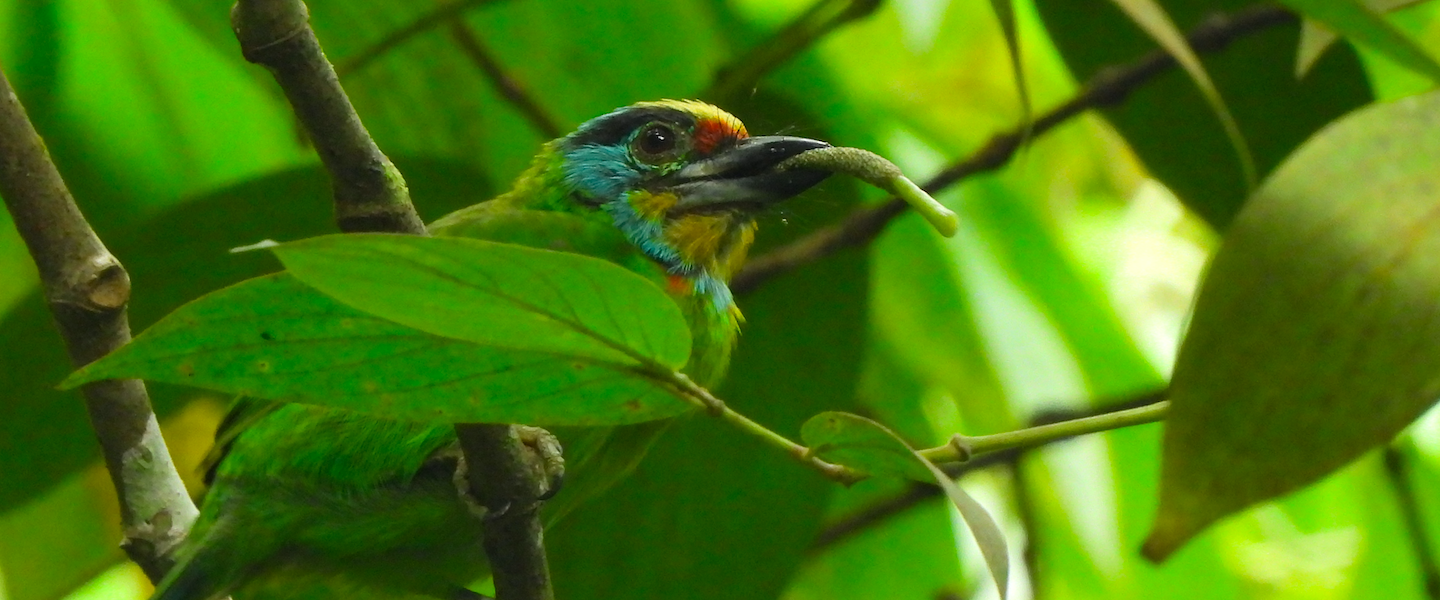I departed my home in Helsinki to start a field research expedition in the southeastern rainforest of Madagascar. As my flight from Istanbul to Mauritius got delayed, I lost my connection to Antananarivo, and the airline offered me three nights of accommodation covered on the island, a great opportunity to get to know Mauritius and its wildlife, despite the delay of my expedition. Staying in Port-Louis, I got some days to explore the north and west side of the island and enjoy some beach time. I really wanted to go to Île-aux-Aigrettes, an international example of conservation of birds, so I figured out how to without a vehicle.
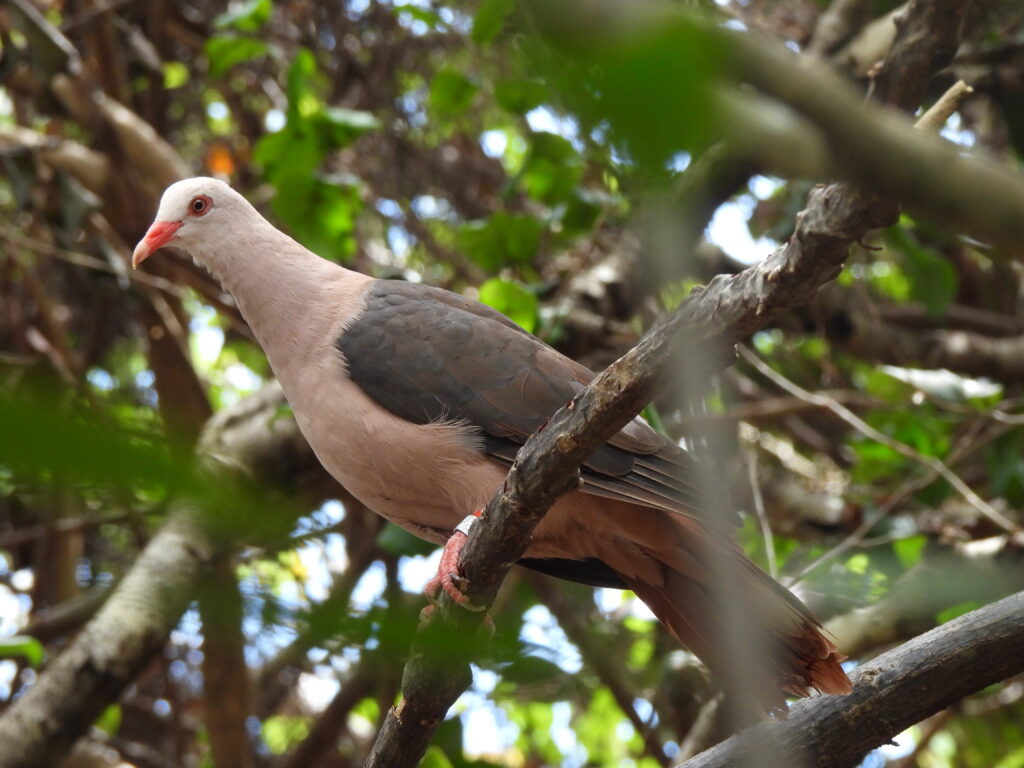
From Port-Louis, I hopped on a bus to the south end of the island, Mahébourg (less than MUR 100). Leaving past 06.45, I reached Mahébourg before 09.00 and caught a shuttle bus through the Blue Bay to the embarkation spot in Pointe Jérome. My plan for the day was reaching Île-aux-Aigrettes by 09:30, so that I could join a guided tour and be back in Port Louis just in time for late lunch.
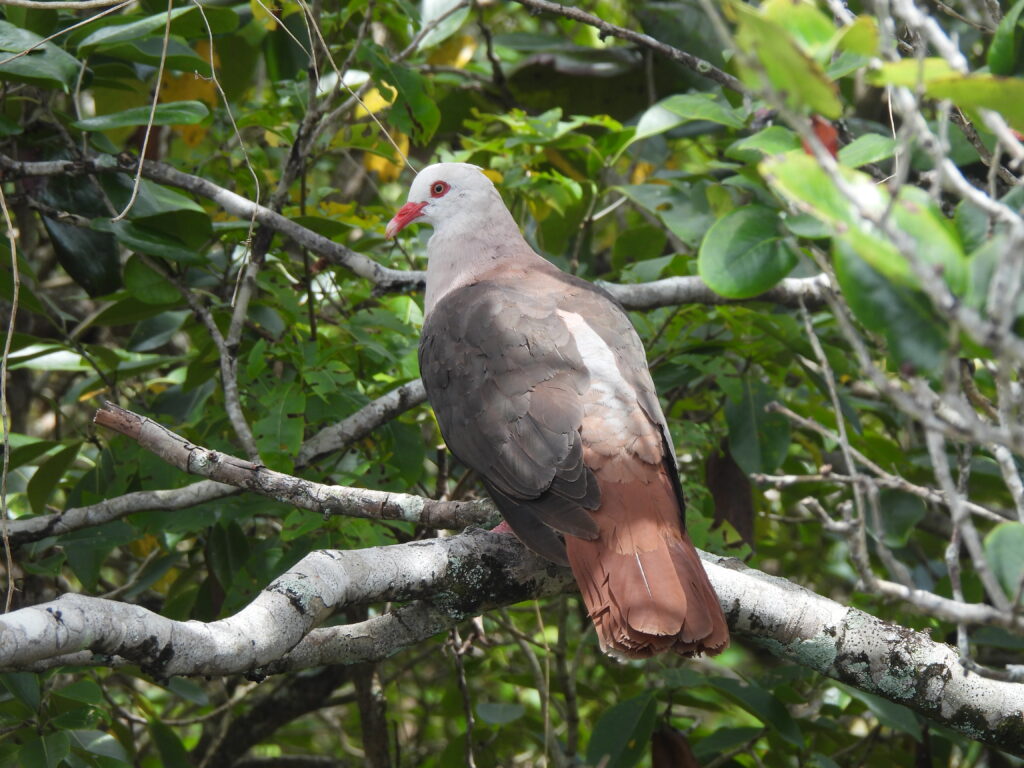
The island is managed by Mauritius Conservation Foundation, and can be only visited through a guided tour of around an hour and a half including the boat ride (22 € in my case, booking last minute the night before and confirming only in site — although I believe tickets could be bought directly at the office).
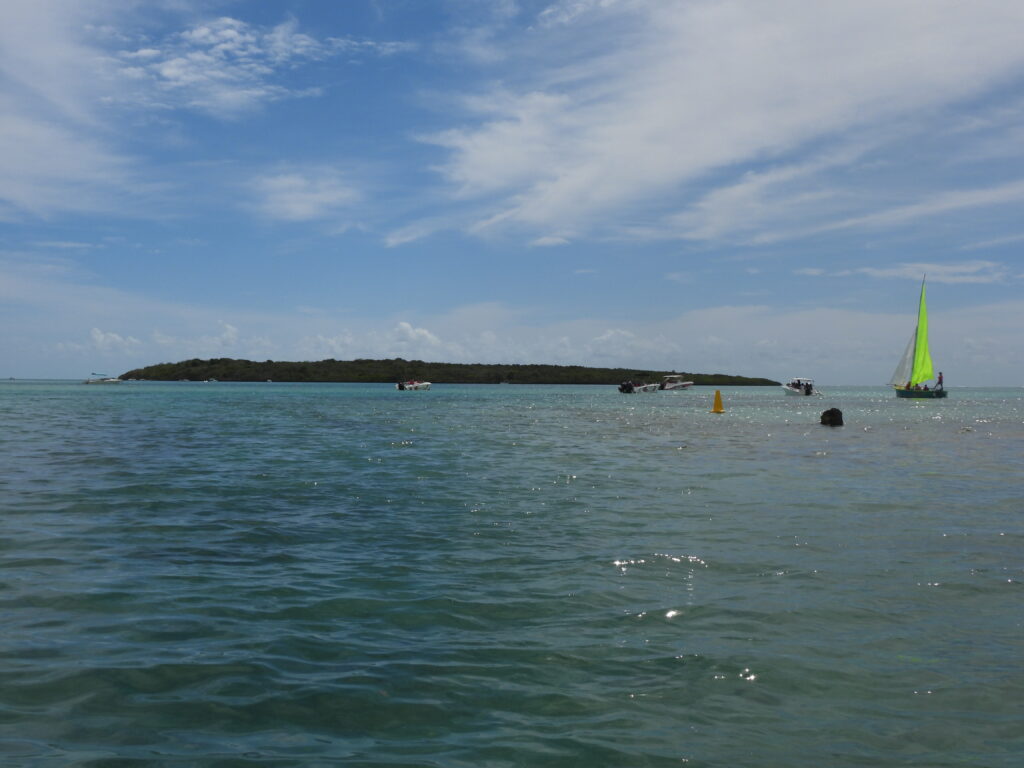
Île-aux-Aigrettes represents the last remains of Mauritius coastal dry forest, a once widespread vegetation type that shrunk importantly due to the extinction of many of the wildlife implied. Giant turtles used to act as stabilizers of vegetation growth and many plants show impressive adaptations to turtle herbivory, but are now long extinct.
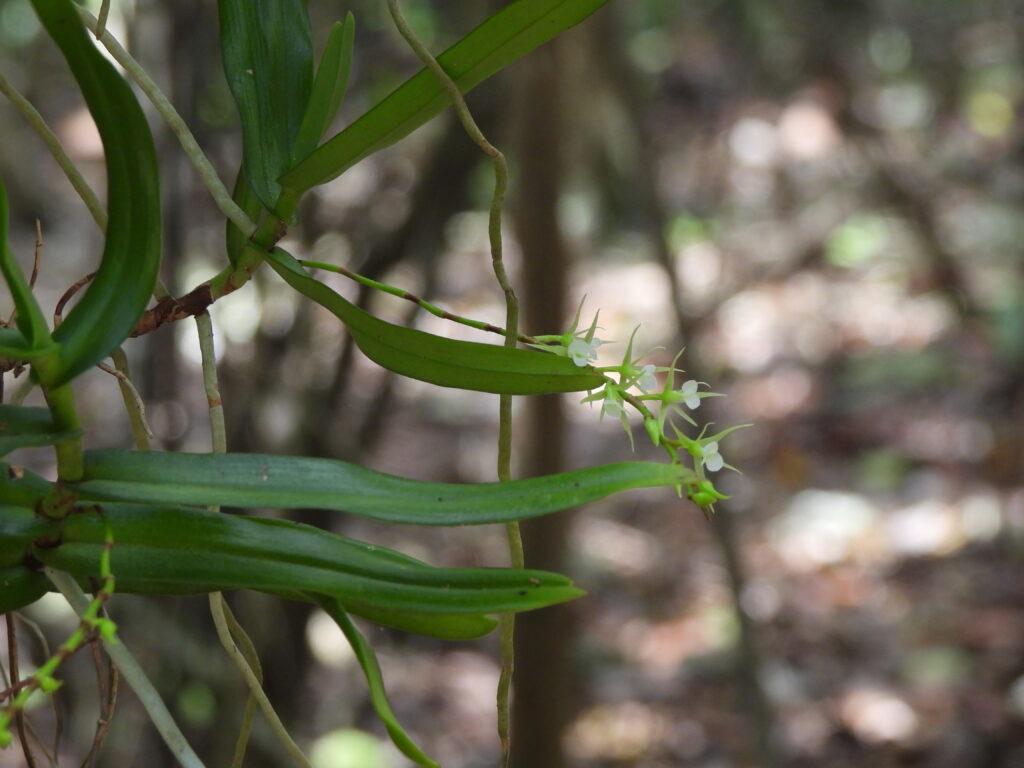
Mauritius Conservation Fund has now populated the island with the most closely related extant species, the Aldabra giant tortoises (Aldabrachelys giganteus), which provide an equivalent ecosystem service and seem to help reaching a sustainable development of the native vegetation.
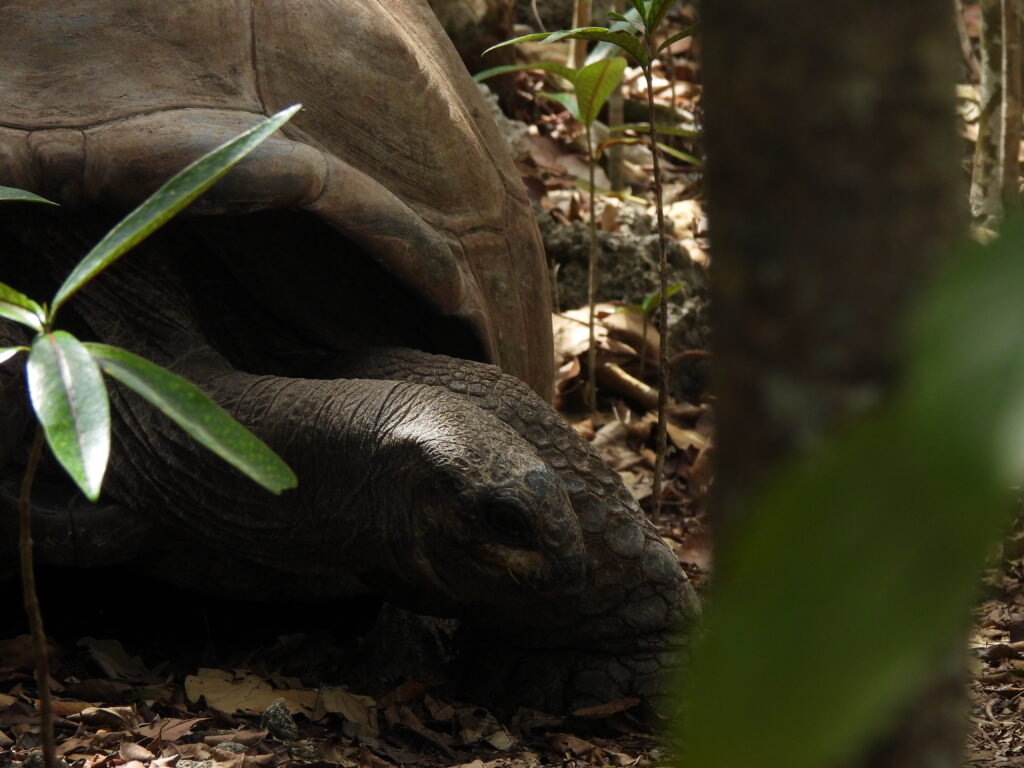
With its vegetation restored, the island has been introduced with different endemic species. The presence of several plants is very singular, including narrow endemics such as the ebony (Diospyros egrettarum) or screwpine (Pandanus vandermeeschii), a stunning orchid (Oenioella polystachys) in full bloom which is only found in Madagascar out of Île-aux-Aigrettes. The floor under some trees was covered in seedlings of a plant (Coptosperma borbonicum) whose young leaves show a pattern against turtle herbivory, this being also found in Réunion. Some other plants are shared with the remote Round Island — which is closed to tourism for conservation purposes —, including the bottle palm (Hyophorbe lageunicaulis).
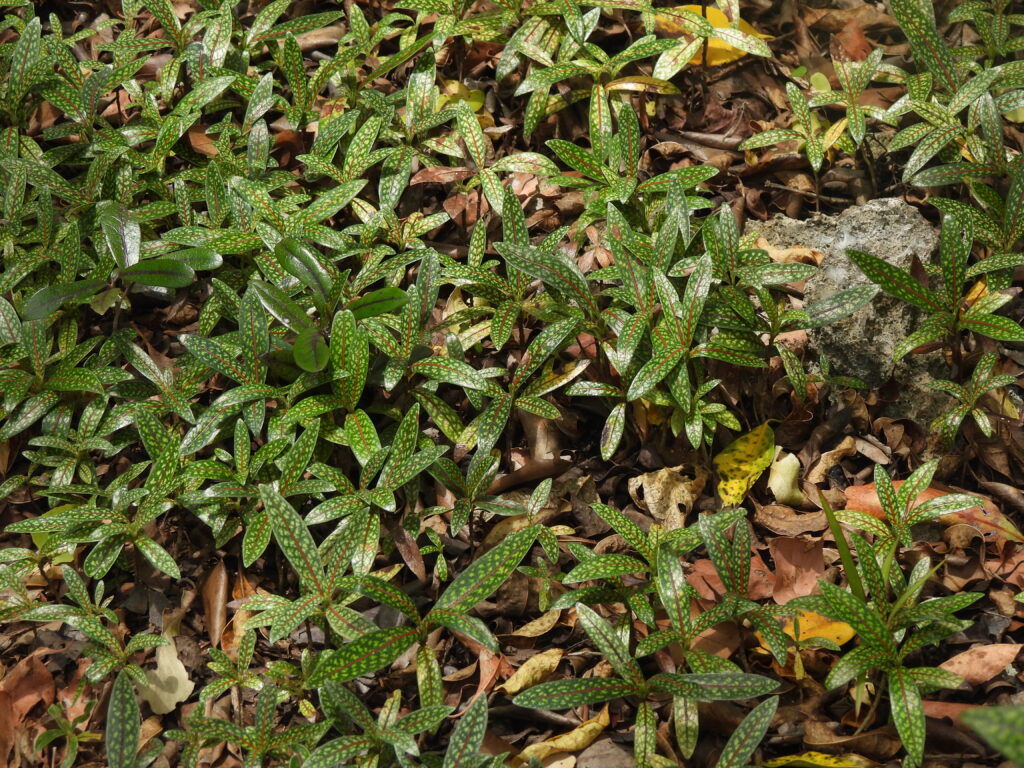
Many of these plants were present in the nursery of the island, which was full of the beautiful Mauritius ornate day gecko (Phelsuma ornata), my personal favorite day gecko and an endemic species common in this island. Another day gecko, the cryptic Round Island day gecko (Phelsuma guentheri), seems to be very hard to find on the island, despite its big size. We didn’t see any of the highly localized Bojer’s skink (Gongylomorphus bojerii) and Round Island ground skinks (Leiolopisma telfairii) of the island, although we found several terrestrial hermit crabs (Coenobita purpurea).
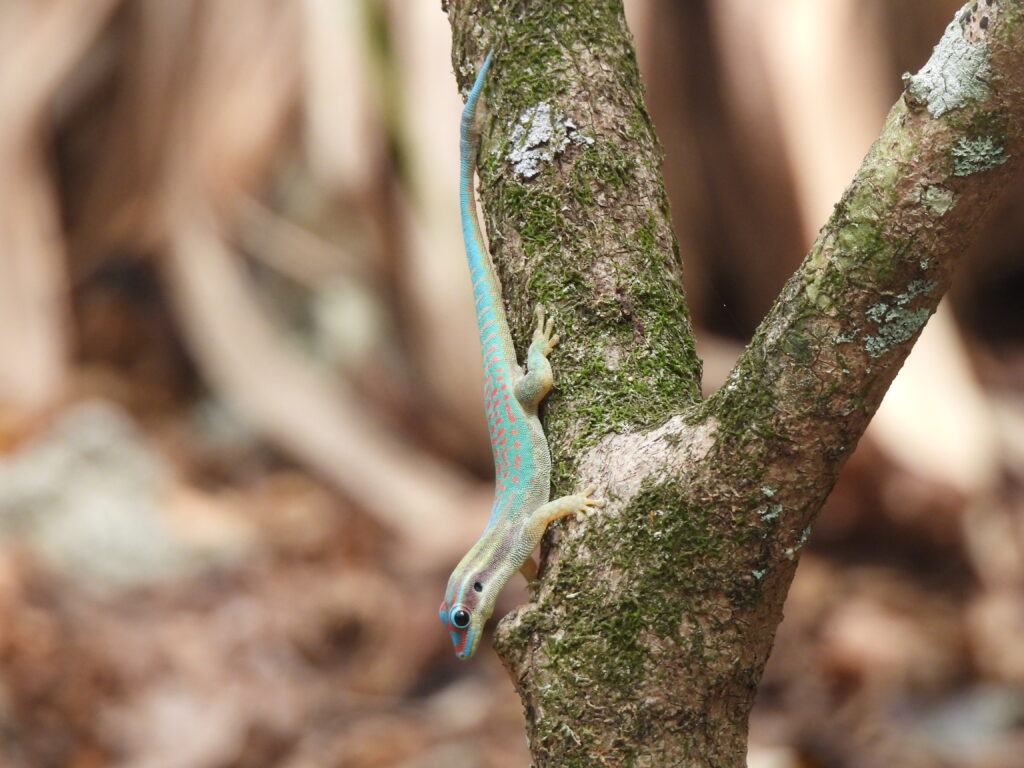
Île-aux-Aigrettes is an easy place for birdwatchers to contact some of the endemic birds of Mauritius. The most mythical, the pink pigeon (Nesoenas mayeri), lives here and in some areas of the mainland now in growing numbers after only ten individuals remained in 1991! This story of conservation success is used as an example of inspiration to preserve habitats and species worldwide, and looking at these particular birds at close distance as they fly or feed surely reminds oneself of these stories.

We got to see two pink pigeons in a designated feeding area, and a third one flying out of the shrubbery and sits in the open as we admired the landscape from a viewpoint, in all cases providing good photographic opportunities.
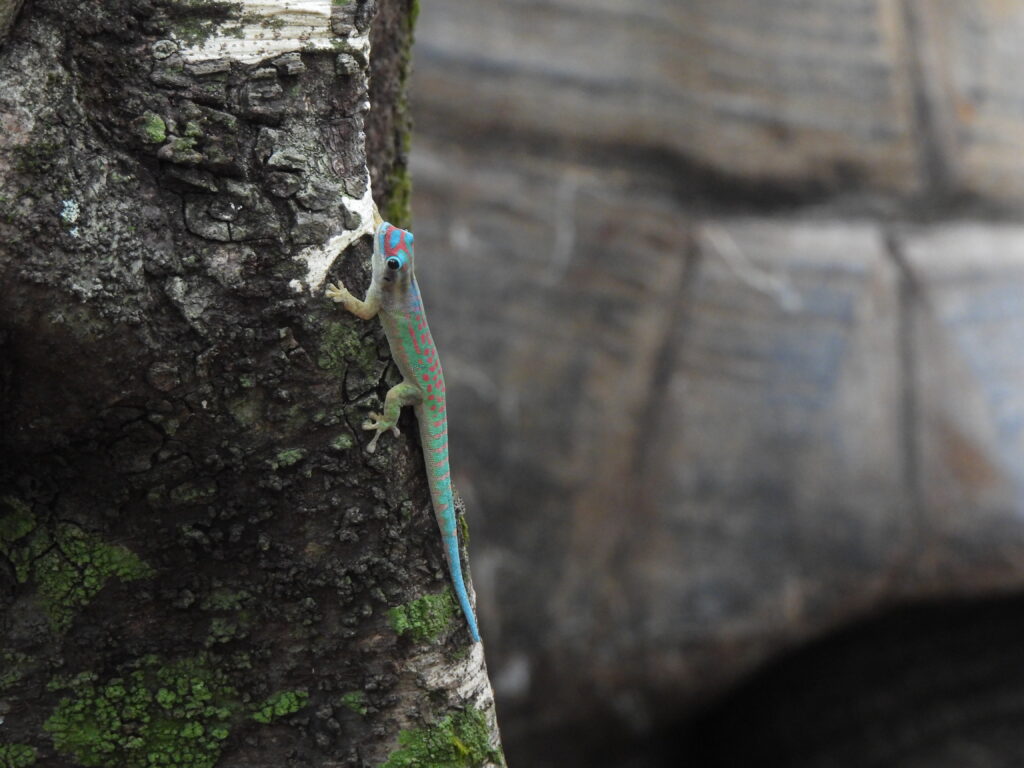
The most common endemic bird on the island was the Mauritius fody (Foudia rubra). A couple greeted us even from the boat, and many more were seen throughout the tour in different points around the island. However, the introduced red fody (Foudia madagascariensis) was also common here.
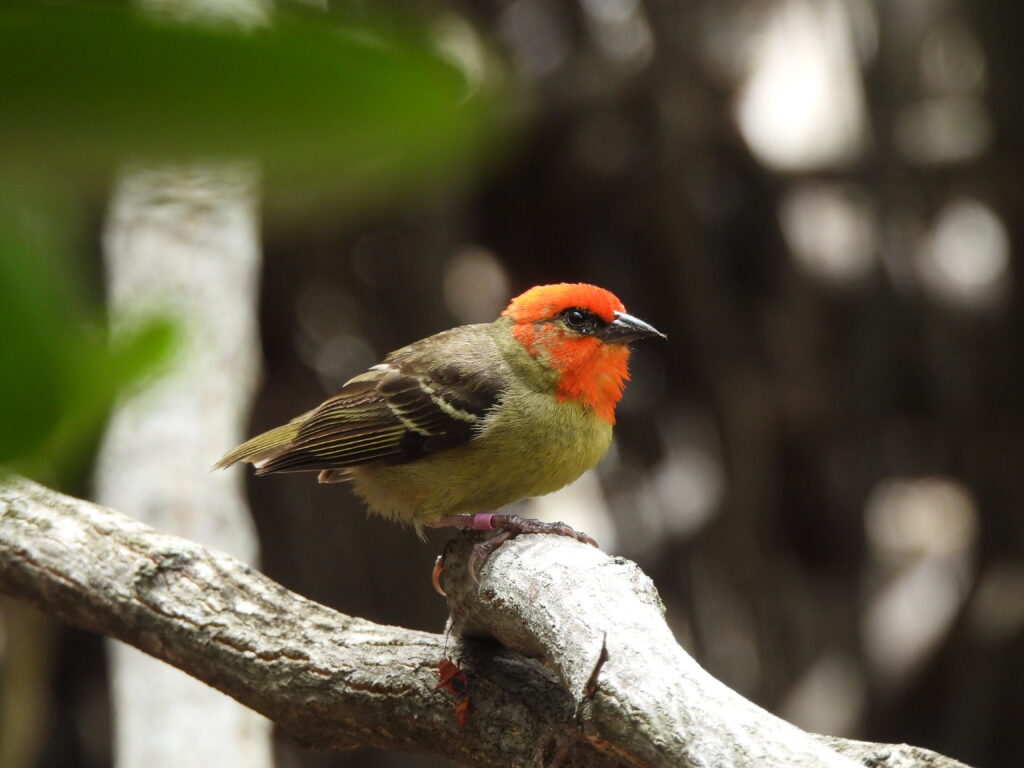
The red fody was not the only introduced bird I saw on the island. Red-whiskered bulbuls (Pycnonotus jocosus) were abundant, and the loud calls of gray francolins (Ortygornis pondicerianus) were part of the soundscape for the day. We bumped into a couple of these gamefowl foraging on the forest floor at a certain point.
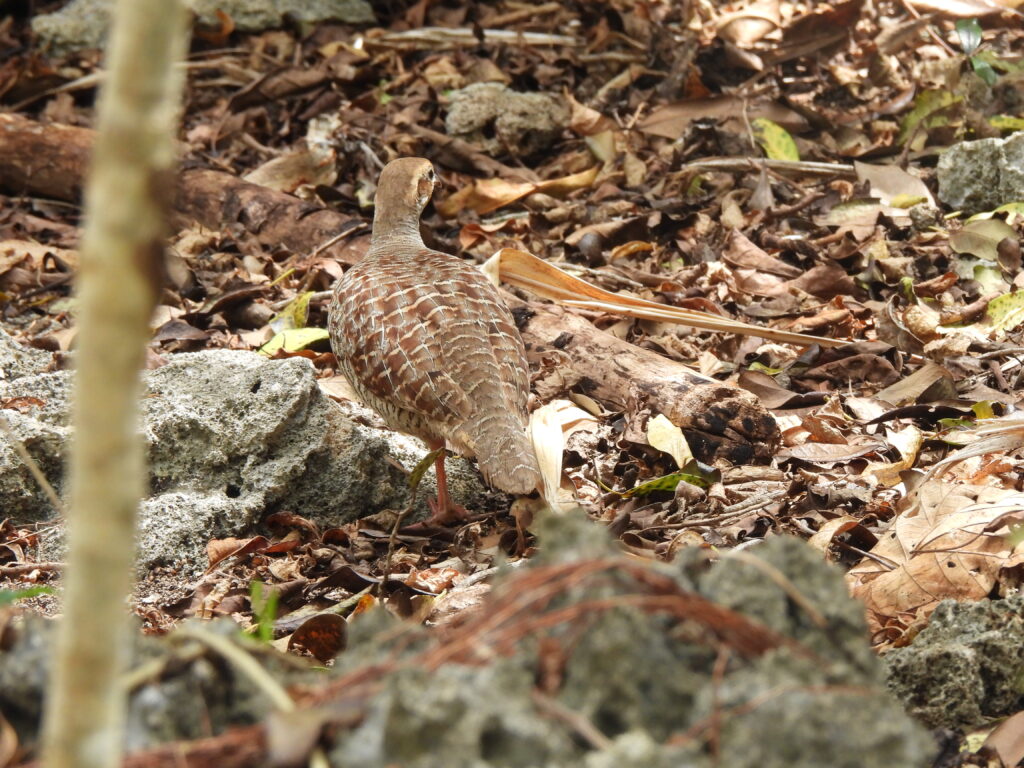
Back to the endemics, the last target bird, the Mauritius olive white-eye (Zosterops chloronothos), unfortunately eluded me during my visit. The guide and some biologists on the island informed me that they live in small numbers in the island compared to the other birds, and that they are not always seen.
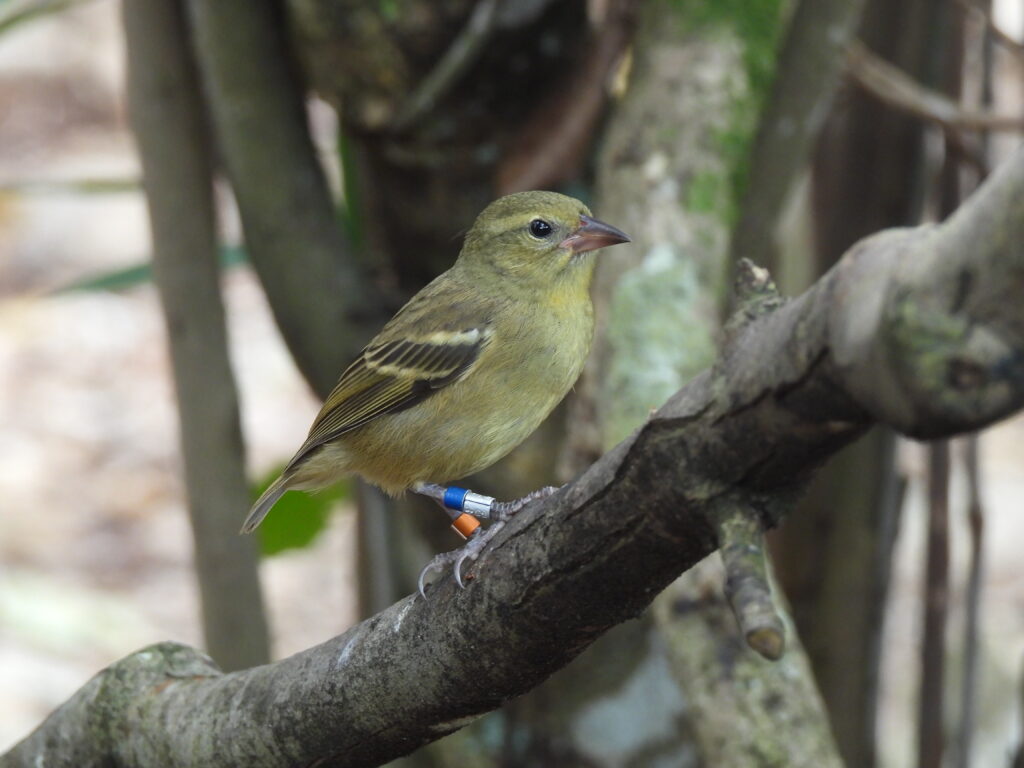
Back to the boat, the water was crystal clear, and I got to see different fish and corals from the surface. Clusters of coral scattered in the white sand under our catamaran were home to numerous white damselfish (Dascyllus abdudafur), Indian redfin butterflyfish (Chaetodon trifasciatus), and lagoon triggerfish (Rhinecanthus aculeatus), among many other colorful fish and corals.

Mauritius was not among my plans. There is much more to see in this island: the National Parks preserving vegetation in the mainland are home to numerous endangered endemics, including the singular Echo parakeet (Psittacula echo) – the last extant Mascarene parrot – and Mauritius kestrel (Falco punctatus), or the Mauritius bulbul (Hypsipetes mauritianus) and the Mauritius cuckooshrike (Lalage typica). Although this was a nice taste of the island and I’m happy I got to visit different habitats, if I’m ever back I will try not to miss these forests and these birds, as well as a glimpse to the underwater.

